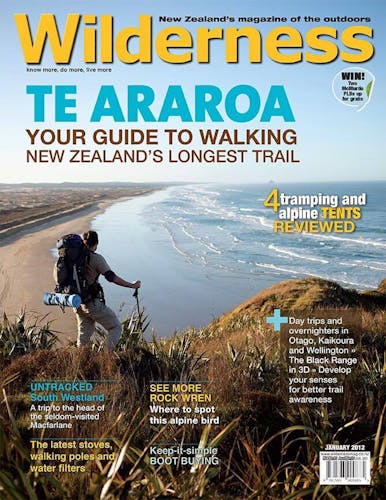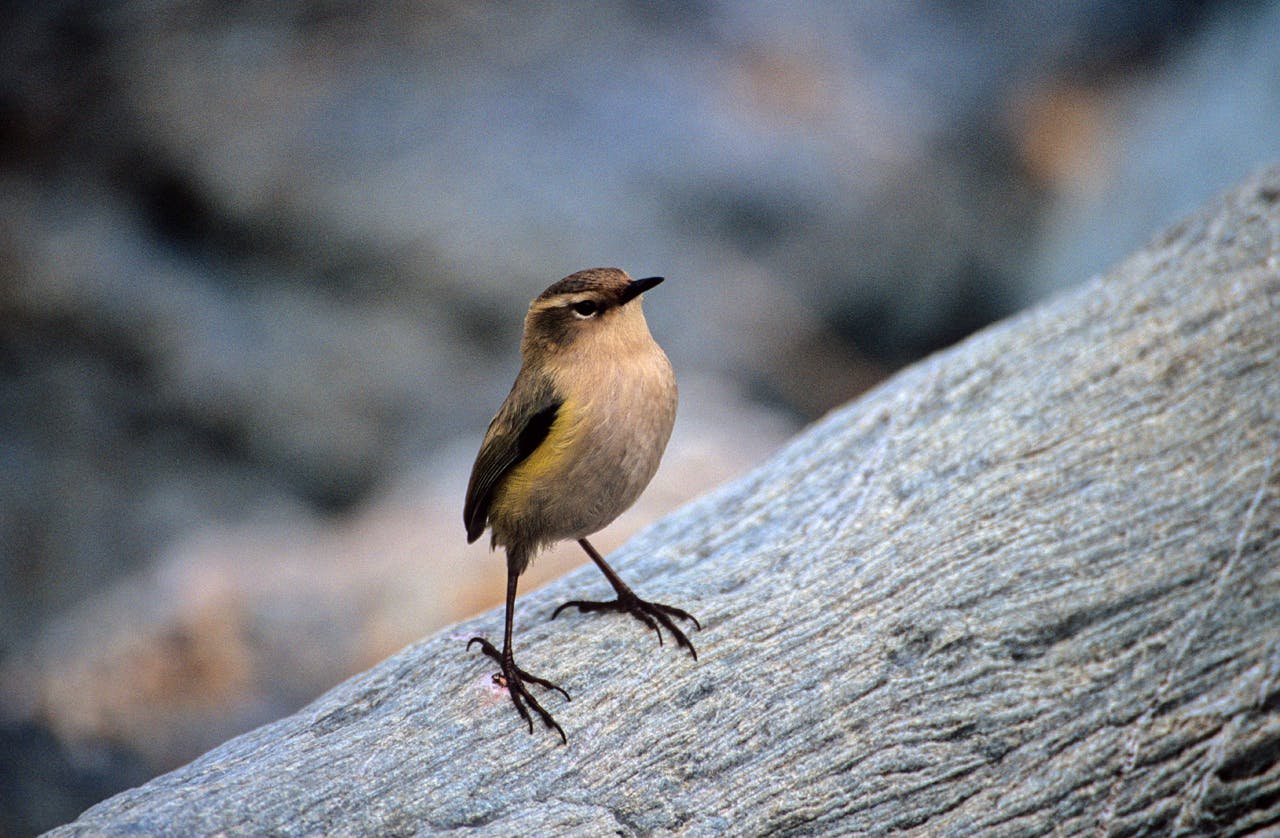Three places to find this rock-hopping alpine bird
Rock wren are among my favourite native birds. These tiny birds, known to Maori as piwauwau, somehow eke out an existence among rock jumbles in the South Island’s mountains.
Like other wrens, rock wren have virtually no tail and proportionately long legs and beaks. The males weigh only 16g; the females a slightly heftier 20g. A lighter band of feathers above their eyes gives them an almost stern expression. Sadly, they are the only surviving members of the genus Xenicus, which also once included three subspecies of the bush wren – all now presumed extinct in New Zealand.
While many trampers often assume that kea are true alpine birds, these parrots are not strictly alpine and spend much of their time below the bushline. The status of New Zealand’s only true alpine bird belongs to the rock wren. Although mainly insectivorous, they also eat grass seeds and fruit.
Before European settlement of New Zealand, rock wren occurred in the mountains of the North Island but now live exclusively in the South Island. Colour variation exists in the population, with greener birds in Fiordland and north-west Nelson, and browner birds in the central Southern Alps. But their population is by no means continuous, and the birds exist in small and somewhat isolated pockets. The Department of Conservation is currently attempting to gain a better understanding of rock wren distribution after one University of Otago study recently suggested a sharply declining population.
Rock wren are particularly vulnerable if a warming climate increases the number of predators expanding into the alpine zone.
Where to see rock wren? I can only recommend where I’ve seen the birds, or know them to exist, and suggest you exercise great patience when looking for them. Being small, shy and secretive, they are easily disguised and unnoticed. Rock jumbles and the foot of talus slopes, particularly those near sub-alpine scrub, provide your greatest opportunity of seeing them. Even then, their subtle colouring camouflages them among rocks, so you might have to rely on using your peripheral vision to spot movement. Poor fliers, the birds hop from rock to rock, often displaying a distinctive bob. They emit a high-pitched, sharp, three note call.
It seems that rock wren survive the harsh mountain winters by somehow keeping sheltered in gaps beneath the rocks, perhaps insulated by snow cover. In that sense, they are our avian equivalent of North America’s pika, small rabbit-like rodents that survive winter in the mountains living under rock jumbles and eating dried flowers they have collected over the previous summer.
Trampers and mountaineers can aid DOC by providing information of any rock wren sightings. Be sure to record the grid-reference, map number, and a description of the number of birds seen. The New Zealand Ornithological Society also has a website (eBird.com/nz) to record sightings.
Wills Valley, Mt Aspiring National Park
Wills Hut is a much underrated ex-NZFS four-bunker, occupying pleasant flats beneath Mt Brewster, and can be reached on a good track from the Haast Pass Highway. Routes in the upper valley lead around a schist gorge and gradually up onto Wilson Pass. In a boulder jumble at the base of the pass, I once observed a group of seven rock wren – the largest number I’ve seen in any one place.
Lead Hills, Kahurangi National Park
The Lead Hills are a great jumble of granite boulders and, not surprisingly, offer good habitat for rock wren. Trampers can reach the Lead Hills on a track directly from the Aorere Valley, or alternatively from Green Saddle near Boulder Lake. Lake Clara is a great place to pitch a tent and peruse the jumbles for rock wren. Another rock wren locality in Kahurangi is Lake Henderson, where studies of the birds have occurred.
Homer Tunnel, Fiordland National Park
This is possibly the most accessible site to witness rock wren. From a car park on the Hollyford side of the tunnel, take the 20-minute East Homer Nature Walk and watch for the birds among rock jumbles.








